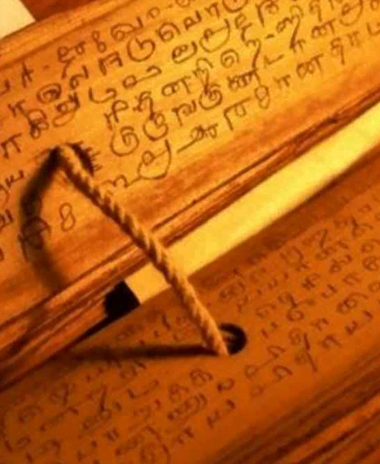Nadi Astrology: Unlocking the Secrets of Your Past and Future
-
By
 Astro Vibz
Astro Vibz

Nadi Astrology Introduction
Nadi astrology: unlocking the secrets of your past and future. Nadi Astrology, an ancient practice originating from India, offers a unique perspective on life and destiny. Based on the belief that our present circumstances are shaped by the actions of our past lives, Nadi astrology delves into the depths of our existence to reveal profound insights about our past, present, and future.
This form of astrology revolves around “Nadi leaves,” ancient Tamil texts inscribed on palm leaves, which purportedly contain comprehensive knowledge of an individual’s life. In this article, we will explore the fascinating world of Nadi astrology, its origins, the process involved, and the profound guidance it offers for leading a successful life.
The Origins of Nadi Astrology
Nadi astrology finds its roots in the ancient wisdom of India, attributed to sages or Rishis who penned the Tamil texts on palm leaves thousands of years ago. These sages possessed extraordinary knowledge and insight into the human experience, and they meticulously recorded their wisdom on the Nadi leaves. It is said that the information contained within these leaves encompasses every aspect of an individual’s life, including their past actions, present circumstances, and future possibilities.
Accessing the Nadi Leaves
To access the profound wisdom contained within the Nadi leaves, a Nadi astrologer requires the thumb impression of the individual seeking guidance. According to Nadi astrology, there are 108 different types of thumb impressions, each representing a specific Nadi bundle. Men are required to share their right-hand thumb impression, while women are asked for their left-hand thumb impression. This unique identifier helps the Nadi astrologer locate the specific bundle of Nadi leaves that hold the individual’s life information.
Deciphering the Nadi Leaves
Once the appropriate Nadi bundle is identified, the Nadi astrologer embarks on the process of deciphering the inscriptions on the palm leaves. This task requires immense skill and expertise, as the ancient Tamil texts may be challenging to interpret.
The Nadi astrologer carefully studies the symbols, scripts, and patterns on the leaf, unravelling the hidden meanings and messages encoded within. Through this interpretation, the astrologer gains insights into the individual’s past life, present circumstances, and potential future paths.
Nadi Astrology: Understanding Your Past Lives
Nadi astrology unlocks the secrets of your past and future. One of the most intriguing aspects of Nadi astrology is its ability to shed light on our past lives. According to this ancient practice, our current life is influenced by our actions and choices in previous incarnations. The Nadi leaves reveal glimpses into these past lives, allowing us to understand the karmic patterns that shape our present reality.
By gaining awareness of our past actions, we can make conscious efforts to rectify any negative karma and align ourselves with a more positive and fulfilling path
Nadi Astrology: Insights into Your Present Life
In addition to uncovering information about past lives, Nadi astrology provides valuable insights into our present circumstances. The Nadi leaves offer a comprehensive analysis of our strengths, weaknesses, and life challenges. They provide guidance on career choices, relationships, health, and overall well-being. By understanding the unique qualities and lessons of our present life, we can make informed decisions and navigate challenges with greater clarity and purpose.
Nadi Astrology: Peering into the Future
While Nadi astrology acknowledges that our future is not set in stone, it offers glimpses into the potential paths that lie ahead. The predictions derived from the Nadi leaves are not deterministic but serve as signposts, indicating the probable outcomes based on our current trajectory. Armed with this knowledge, we can make conscious choices and take actions that align with our desired future. Nadi astrology empowers individuals to shape their destinies through awareness and conscious decision-making.
Nadi Astrology: Living a Successful Life
The ultimate aim of Nadi astrology is to guide individuals towards a successful and fulfilling life. The insights gained from the Nadi leaves can be transformative, providing clarity, direction, and encouragement. Armed with this knowledge, individuals can make conscious choices, align themselves with their true purpose, and overcome obstacles on their path. Nadi astrology serves as a compass, helping individuals navigate the complexities of life and make choices that lead to personal growth, happiness, and success.
Conclusion
Nadi astrology is a remarkable system that offers profound insights into the mysteries of life, destiny, and personal growth. Rooted in ancient wisdom and guided by the belief in past lives, it provides a unique perspective on our existence. By accessing the Nadi leaves and deciphering their messages,
Nadi astrologers offer guidance and clarity to individuals seeking a deeper understanding of their past, present, and future. Embracing the wisdom of Nadi astrology can empower individuals to live a more purposeful and successful life, aligning their actions with their true potential.
Please click here for more information about the Nadi Astrology service and to schedule an appointment.
or visit us on https://astrovibz.com/nadi-astrology/
